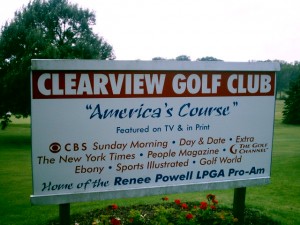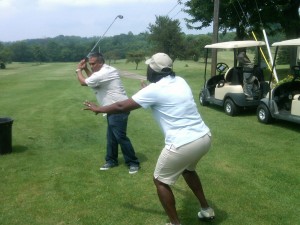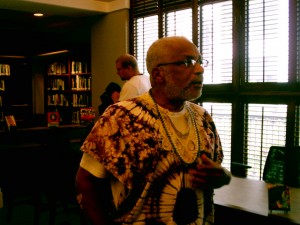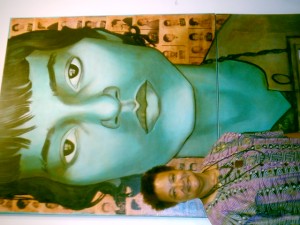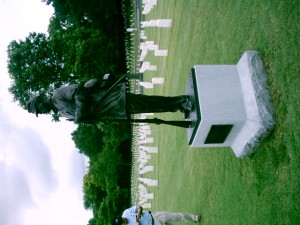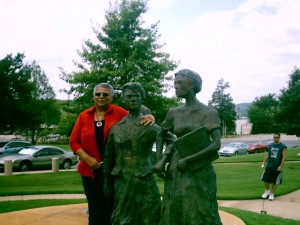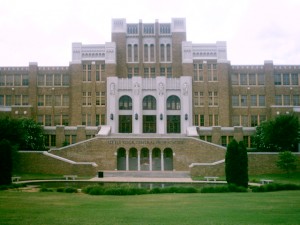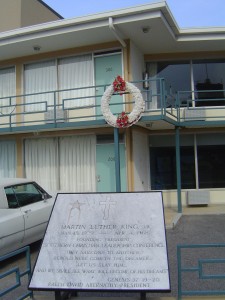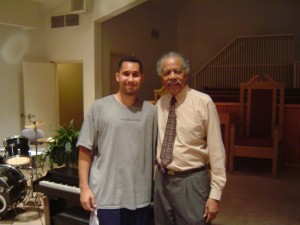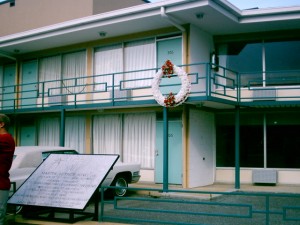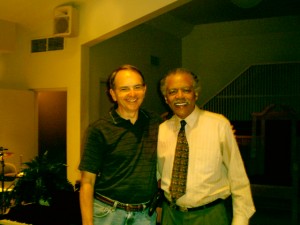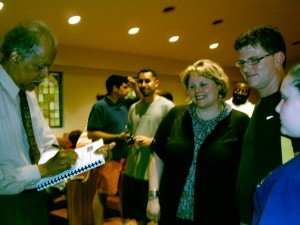20 June 2011
While much of the civil rights movement has been talked about (in the past week) in terms of desegregating public spaces, providing equal opportunities, and changing laws concerning employment, access to education, voting rights, etc etc. Attempts to desegregate were also being made in other areas of life, using other means. Today’s visit to Clearview Golf Club in New Canton, OH brought this home to me. Dr. William Powell, a World War II veteran and an aficionado of golf from a very early age built this golf course with his own hands in 1946. In those days golf courses were segregated. He tried to get a loan, but he was denied a loan and then ultimately was helped by his elder brother and some friends to start up the golf course…for everyone. So Dr. Powell integrated golf by building his own golf course that would be inclusive. In 2009 the PGA awarded him its highest award—the Distinguished Service Award (It took the PGA 52 years to reach this conclusion!! But glad they did it). Dr. Powell died on 31 August 2009 at the age of 91. The club is now operated by his daughter Dr. Renee Powell and son Fred Powell. Renee Powell is a celebrated golf player and instructor who has received multiple awards, citations, and prizes. The club offers camps, training, and scholarships for deserving students.
At Clearview, we were provided lunch and a historical overview of the place. Dr. Renee Powell provided me a brief lesson on how to swing a golf club! I hope it did not look like me playing cricket or swinging an axe!
The Civil Rights Tour has now ended and we are all now at home. But the memories of the trip and its implications will continue to unfold in days to come. We did watch some documentaries like “Witness: From the Balcony of Room 306” which was Rev. “Billy” Kyles eyewitness account of the assassination of Dr. Martin Luther King Jr. We also watched a short documentary called on Dr. William Powell the founder of Clearview Golf Club called “Last Memory: Bill Powell of Clearview Golf Club.
I will be reflecting on many aspects of this trip for months to come. Indeed, it gave me a view of the Civil Rights movement that is remarkably different from what is retailed in books, media, and conversations. Being in the actual places in conjunctions with readings, watching audio visuals, and talking to participants was a something else…it gave me a feel of the movement quite unlike anything else I have known…especially the historic struggle of African American communities in the face of hatred, revulsion, and violence committed on them at many times and places.
I also arrived at the conclusion that the Civil Rights Movement was cobbled out of spontaneous movements and organized protests conducted by civic organizations. Most of us have heard of the NAACP or the National Association for the Advancement of Colored People. But there were many more like the SCLC (Southern Christian Leadership Conference), SNCC (Student Non Violent Coordinating Committee or “snick” ), Alabama Christian Movement for Human Rights (ACHMR), CORE, and many others. While some of these organizations were well known national organizations, others like the Birmingham Community Affairs Committee, Alabama Council on Human Relations, and the Montgomery Improvement Association operated on a more regional, local, or urban level. The SCLC in 1963 boasted a 1 million dollar budget and 100 employees (Steven Kasher, The Civil Rights Movement, p. 92). These civic organizations, their leaders and cadre played an important role in strategizing and mobilizing people to action. Careful exposure to the media took the movement not just to every living room in America, but even abroad. Newly independent Asian and African nations looked closely to the US government to see how it would respond to racism.
I wondered, as one of our speakers saw it, that the approximately 6 million African Americans who migrated to the north since the early 20th century were not migrants….but “refugees.” But could this act of voting with the feet be represented in such a fashion? What would historians of the United States think of such a view?
This tour has been a pilgrimage for me. It seems that the tour had to do with more than just the collection of information. It is personal, having to do with shaping one’s identity, self-perception, and understanding of one’s nation and location in the world. It evoked strong emotions and convinced me about the importance of race in the history of this country…a history that has a dark underside that will make reconciliation no easy task. But it did change our world as it drew on the works of international activists like “Mahatma” Gandhi. As Margaret Mead once observed, “Never doubt a small group of thoughtful, committed citizens can change the world. Indeed, it is the only thing that ever has.” I agree.

